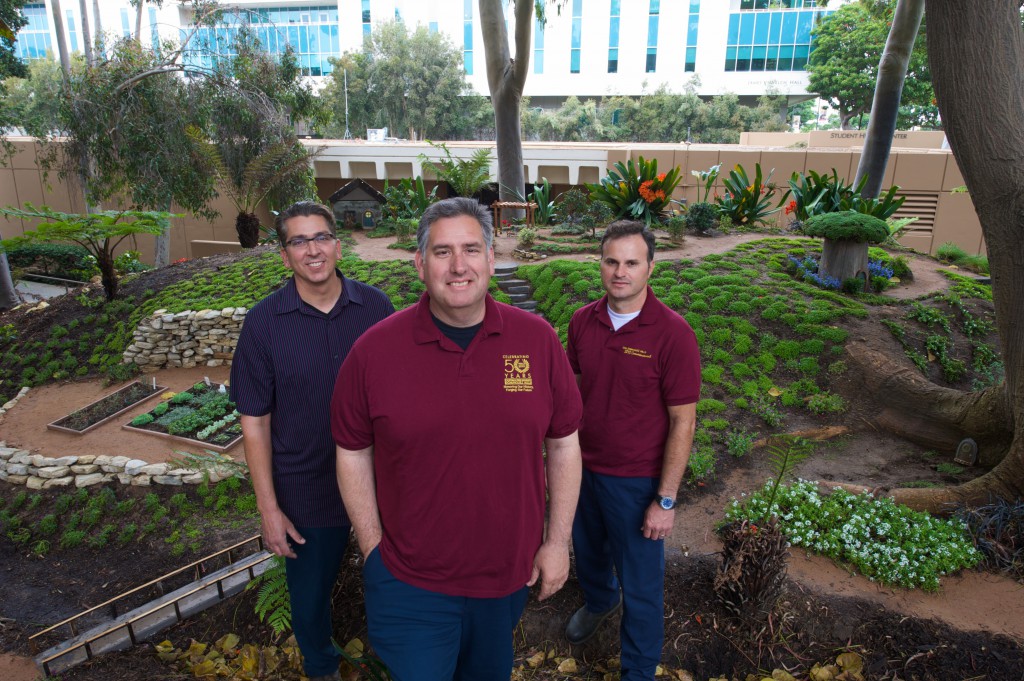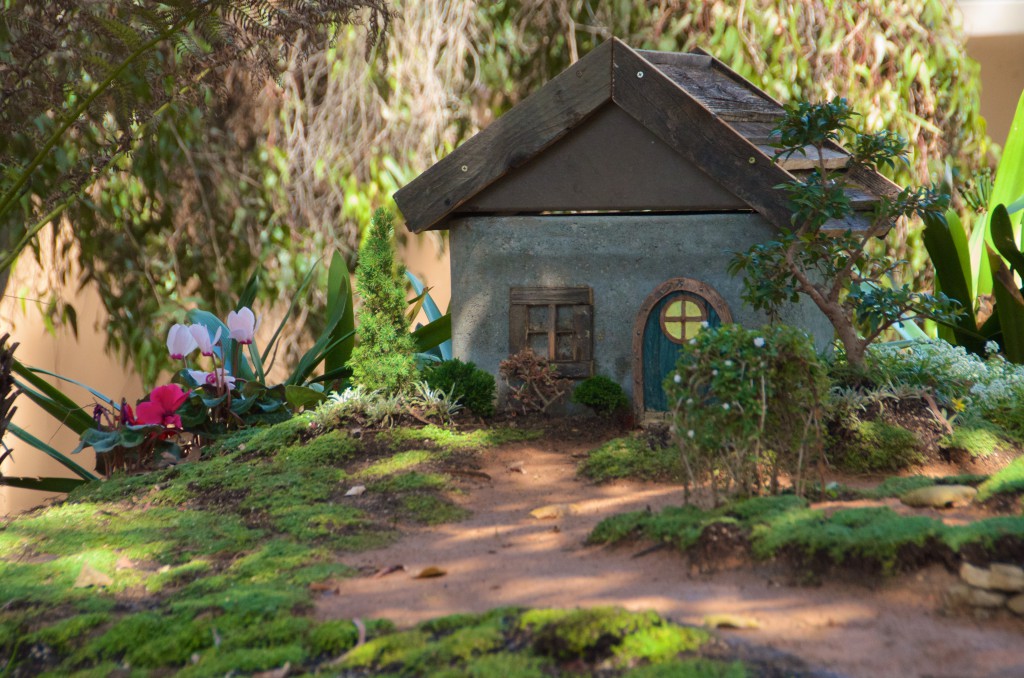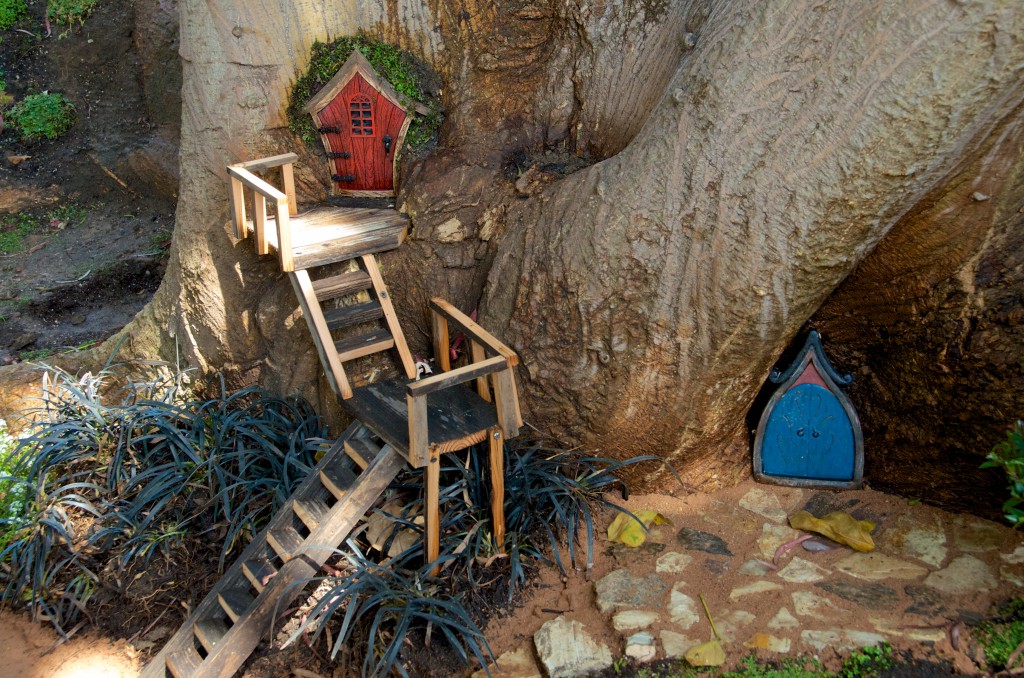
The winding walkway between the University Theatre and the Student Health Center has always been a lush, calming spot on campus, a place where people stop to enjoy the shade and tranquility. Now the path offers one more reason to stop.
If you didn’t know any better, you might think that a group of elves had discovered the spot too and decided to call it home. Tiny houses have popped up, as standalone dwellings, or tree houses, signified by colorful little doors in the trees, or as Hobbit-style houses embedded in rock. They even have planted a garden, and a ‘Central Park’ with a gazebo and chairs.
As a matter of fact, the elves are actually the university’s grounds crew, who has been transforming the area’s rolling hillside abutting the health center into the tiny village.
The idea grew from a need to solve an erosion problem in the area that was causing silt to clog the draining pipes that take water runoff from the health center. Taking the lead on the project was groundsman Peter Chance, who has had a vision for the location ever since testing coordinator Terry Molano put a plastic playhouse on the top of the mound four years ago.
“I remember walking down here one day and thinking it would be awesome to put a miniature village or fairy garden or FernGully,” Chance said, referencing a film about the magical inhabitants of a rainforest. “I’ve seen it in the back of my mind for years. I just would stand here and imagine: a house could go here, that could go here, and I started seeing some of the little nooks.
“So when they told me that we were having this silt problem with the last heavy rains and so forth, I said I could do this [idea of his] on a relatively inexpensive budget.”

Using found materials at the university’s Physical Plant facility combined with miniature style plants–including bonsai trees–and a lot of imagination, Chance, who is a bonsai specialist, and fellow groundsmen Fernando Goncalves and Chris Evans, brought the village to life. A tree stump topped with a saucer from a plant pot topped with moss were used to create the ‘gnome house,’ a broken concrete electrical box formed the main house at the top of the hill, small pieces of redwood were turned into stairs up to a treehouse door, a leftover wood plank became a bridge, and infield clay from when the baseball diamond was renovated was reused for the small roads and pathways.
To improve water retention to the area and prevent silt from the mound traveling to the main drain at the bottom, the crew has planted baby’s tear moss as the main ground cover, with impatiens flowers to add color. A simulated dry river bed at the bottom of the village is filled with dead plant material, called duff, which will hold the silt back and allow water to percolate through.
Chance and Goncalves have said it’s been fun to break up their normal workday routines with this project. They’ve also enjoyed the feedback from passersby who have already been affected by the additions.
 “It allows people to imagine and it kind of relieves stress. People have been talking to me about that ‘When I come here, I see it and I imagine and I just kind of calm down,’” Chance said of the reactions.
“It allows people to imagine and it kind of relieves stress. People have been talking to me about that ‘When I come here, I see it and I imagine and I just kind of calm down,’” Chance said of the reactions.
The village will continue to be a work-in-progress, with little touches added here and there as time and budget allow.
“I have a lot more ideas. I’d love to be able to put rope bridges between the two trees and make little higher level apartments. That would be cool,” said Chance, trailing off to wherever his imagination takes him.